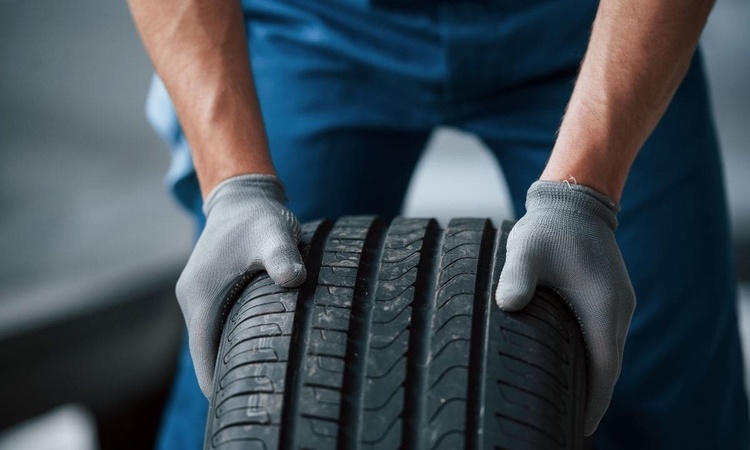Tire care practices to extend tread life and safety
Proper tire care helps extend tread life and improve vehicle safety by reducing uneven wear and maintaining predictable handling. This article outlines practical maintenance and inspection steps, how related systems like brakes and cooling affect tires, and record-keeping tips for longer-lasting, safer tires.

Tire condition affects fuel economy, handling, and overall vehicle safety more than many drivers realize. Regular maintenance and timely inspection help prevent premature tread wear and reduce the risk of roadside failures. This article covers straightforward practices—pressures, rotations, alignment, and monitoring related systems like brakes, cooling, and diagnostics—to keep tires serviceable for longer and preserve predictable performance on varied routes.
How does regular maintenance extend tire life?
Routine maintenance is the foundation of extending tread life. Maintaining correct pressure distributes load evenly across the tire footprint; underinflation increases flex and heat, while overinflation concentrates wear in the center. Regular rotations every 5,000–8,000 miles promote even wear across axles. Wheel alignment ensures steering geometry does not cause one edge of the tread to scrub away prematurely. Oil changes and cooling system care indirectly help by preventing overheating of engine components that could change load or driving behavior. Keep maintenance records to track interventions and identify recurring wear patterns.
What should a tire inspection include?
A thorough inspection checks tread depth, pressure, sidewall condition, and signs of uneven wear or embedded objects. Tread depth gauges or built-in wear bars are useful; replace tires before legal minimums to preserve safety. Visual inspection of sidewalls for bulges or cuts can reveal internal damage. Use diagnostics tools if the vehicle reports pressure or stability warnings—those alerts can indicate slow leaks or sensor faults. Document inspection dates and findings so you can compare wear over time and adjust maintenance or routes accordingly.
How do tires and brakes interact to affect safety?
Brake condition and tire grip work together to determine stopping distance and control. Worn brake pads, warped rotors, or a malfunctioning ABS can change braking force distribution, increasing stress on tread during hard stops and potentially causing uneven wear. Tires with low tread have reduced wet and snow traction, increasing braking distances. Include brakes in routine inspections and ensure brake fluid and components are serviced on schedule; pairing healthy brakes with sound tires improves overall stopping performance and reduces safety risk on busy or variable routes.
When should diagnostics and battery checks be part of tire care?
Modern vehicles use tire pressure monitoring systems (TPMS) and stability control that rely on electronics. If warning lights appear, diagnostics can identify sensor failures, battery issues, or electrical faults that affect tire monitoring. The vehicle battery and charging system should be checked during routine service because low-voltage conditions can produce false alerts or disable helpful diagnostics. Ensuring electronics and diagnostics are functioning keeps TPMS and related safety systems reliable, preventing unnoticed slow leaks or mismatched inflation between tires.
How do cooling, oil, and fuel systems affect tire performance?
Although not directly connected to tread, cooling, oil, and fuel systems influence driving behavior and vehicle load, which in turn affect tire wear. Overheating can lead to reduced engine performance and emergency driving that stresses tires; oil and fuel system problems can alter vehicle weight distribution or power delivery, causing more aggressive acceleration or deceleration that accelerates tread wear. Keeping the cooling system flushed, oil changed per schedule, and fuel system maintained helps the vehicle run predictably, reducing erratic forces on tires across frequent routes.
What records and driving practices help preserve tread life and safety?
Maintaining records of pressure checks, rotations, alignments, inspections, and repairs creates a history that helps diagnose accelerated wear. Log dates, mileage, pressures, and any irregular findings so you can correlate wear patterns with maintenance or routes. Adjust driving routes and habits to reduce repeated exposure to rough surfaces or heavy braking zones when possible. When driving loaded or towing, increase tire pressure within manufacturer limits and verify load ratings. These practical steps and accurate records support consistent safety and extended tread life.
Conclusion Consistent, simple actions—pressure checks, scheduled rotations and alignments, integrated inspections of brakes and electronics, and keeping maintenance records—are effective for extending tread life and maintaining safety. Paying attention to related systems like cooling, oil, battery, and diagnostics ensures reliable vehicle behavior that reduces abnormal tire wear along everyday routes.





